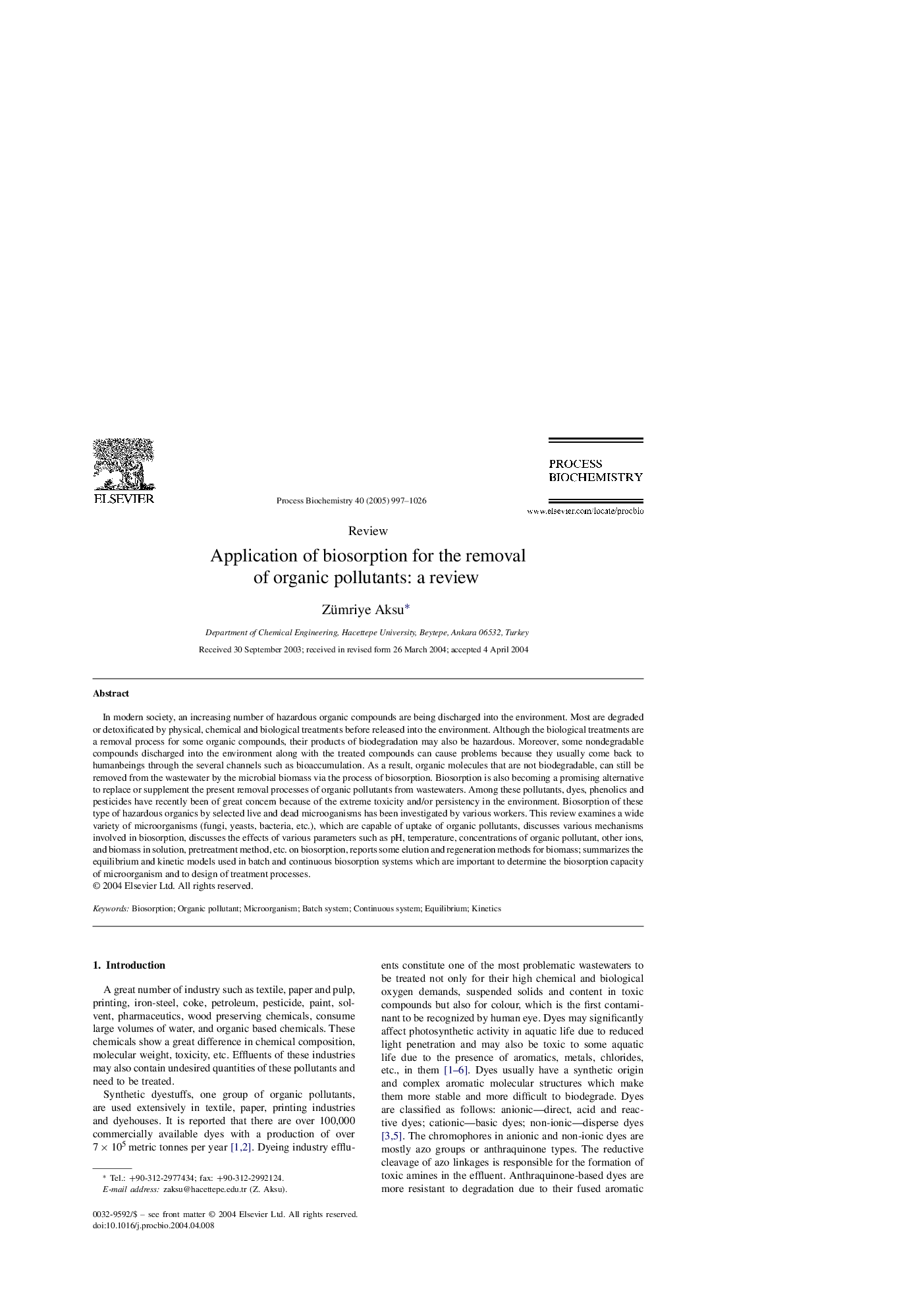| Article ID | Journal | Published Year | Pages | File Type |
|---|---|---|---|---|
| 9607661 | Process Biochemistry | 2005 | 30 Pages |
Abstract
In modern society, an increasing number of hazardous organic compounds are being discharged into the environment. Most are degraded or detoxificated by physical, chemical and biological treatments before released into the environment. Although the biological treatments are a removal process for some organic compounds, their products of biodegradation may also be hazardous. Moreover, some nondegradable compounds discharged into the environment along with the treated compounds can cause problems because they usually come back to humanbeings through the several channels such as bioaccumulation. As a result, organic molecules that are not biodegradable, can still be removed from the wastewater by the microbial biomass via the process of biosorption. Biosorption is also becoming a promising alternative to replace or supplement the present removal processes of organic pollutants from wastewaters. Among these pollutants, dyes, phenolics and pesticides have recently been of great concern because of the extreme toxicity and/or persistency in the environment. Biosorption of these type of hazardous organics by selected live and dead microoganisms has been investigated by various workers. This review examines a wide variety of microorganisms (fungi, yeasts, bacteria, etc.), which are capable of uptake of organic pollutants, discusses various mechanisms involved in biosorption, discusses the effects of various parameters such as pH, temperature, concentrations of organic pollutant, other ions, and biomass in solution, pretreatment method, etc. on biosorption, reports some elution and regeneration methods for biomass; summarizes the equilibrium and kinetic models used in batch and continuous biosorption systems which are important to determine the biosorption capacity of microorganism and to design of treatment processes.
Related Topics
Physical Sciences and Engineering
Chemical Engineering
Bioengineering
Authors
Zümriye Aksu,
